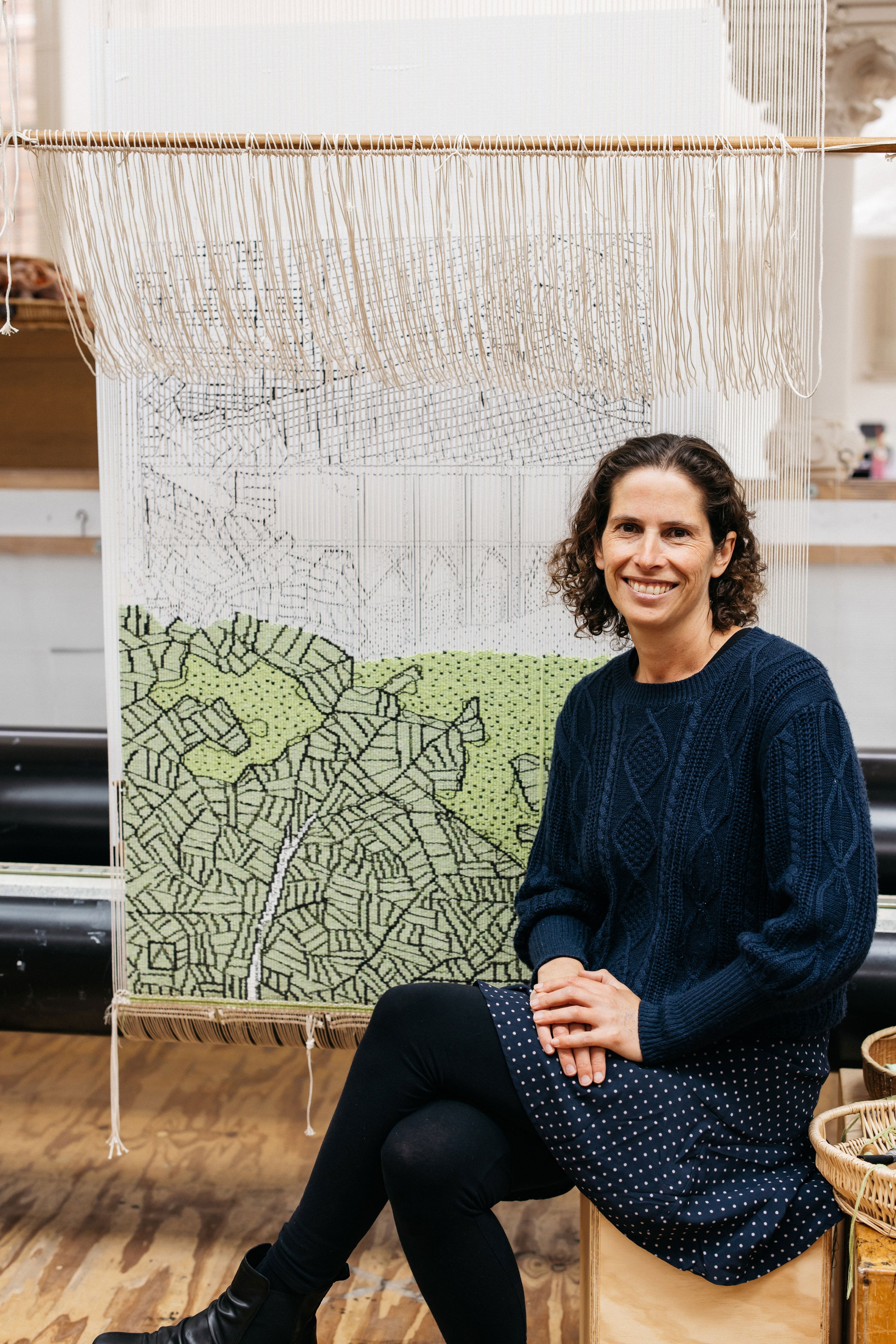Designing for tapestry
Tapestries work best with clear, balanced compositions and defined focal points, as overly complex designs with too many details may not translate well due to the limits of weaving techniques. Designs with bold, defined lines or shapes are easier to adapt, while delicate lines might get lost in the fabric’s texture.
The texture of the artwork is also key, as it influences how the fabric reflects different elements. Designs with varying textures, like smooth or rough elements, can translate well into tapestry when thoughtfully planned. Overall, the best designs for tapestries strike a balance between simplicity and detail, allowing the fabric's texture to enhance the art rather than obscure it.
Here are a selection of images that offer an insight into the process of adapting a design to tapestry and the weaving process itself. The tapestry ‘Once Upon a Time’ designed by Studio Orsi was a finalist in the 2023 Tapestry Design Prize. This design has been translated into tapestry and woven by ATW Senior Weaver, Emma Sulzer.
Photography by Marie-Luise Skibbe.
The original design of ‘Once Upon a Time’ by Studio Orsi, 2023 Tapestry Design Prize Finalist.
A section of ‘Once Upon a Time’, designed by Studio Orsi. This selection was made by ATW Senior Weaver Emma Sulzer, to be adapted into tapestry.
ATW Senior Weaver Emma Sulzer with the tapestry ‘Once Upon a Time’ in progress.
‘Once Upon a Time’ in progress.
‘Once Upon a Time’ 2024, wool, cotton, 110 x 75cm. Designed by Studio Orsi woven by Emma Sulzer.
Detail of ‘Once Upon a Time’ 2024, wool, cotton, 110 x 75cm. Designed by Studio Orsi woven by Emma Sulzer.
How Tapestries are Woven
Each ATW tapestry is hand-woven by a team of specialist weavers using the traditional Gobelin technique, by which an image forms by tightly packing layers of weft (horizontal threads) over warps (vertical thread). ATW wefts consist of multiple strands of wool or cotton of varying colour; this allows the weavers to deftly control hue and tone.
The weavers use the ATW’s base range of over 368 yarns all specially formulated and dyed on-site in the Colour Laboratory. All ATW tapestries are made from high-quality Australian wool, grown using environmentally sustainable and humane animal practices.
On the commencement of a tapestry, the ATW weavers will create a series of explorative tapestry samples. During this development phase, the weaving team work with the designer to discuss colour, materiality and detail before weaving. The final placement of a tapestry also plays a vital role in interpreting a design as it will significantly influence the function of distance, light and sound in the space. With care, tapestries maintain their richness and warmth, long outlasting many other art forms.






